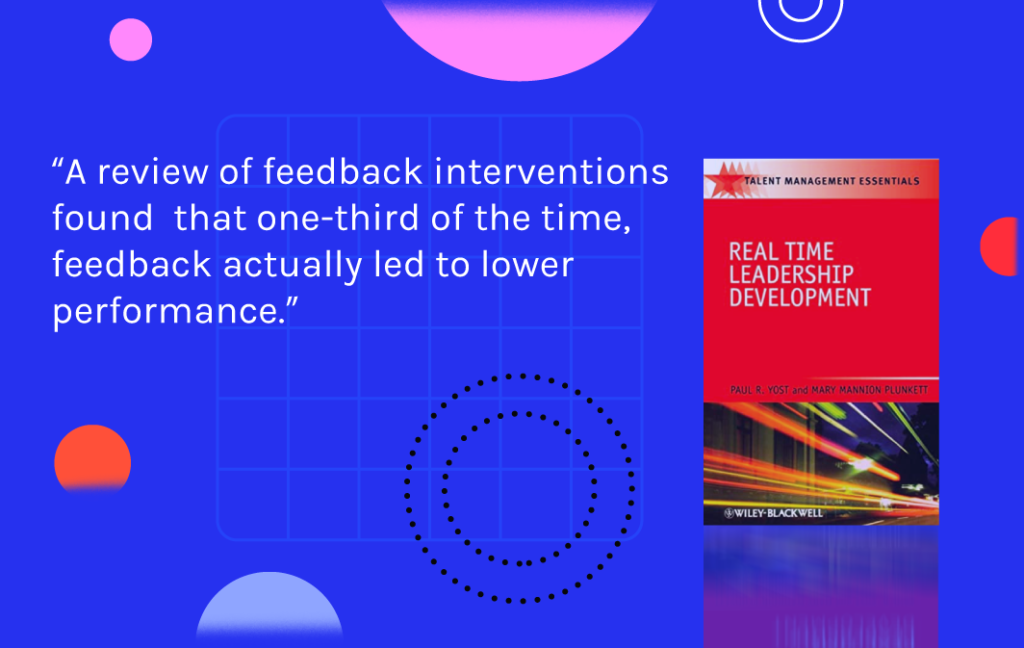Last Updated on October 24, 2021 – 6:20 pm
How do you appraise your methods of the appraisal? Many leaders and managers either miss this question or fail to come up with the appropriate answers. That’s because it’s easier to just come up with generic feedback like “great” or “lacking depth”.
“Over the last decade, I’ve conducted thousands of 360-degree feedback interviews with the colleagues of the leaders I coach,” says Jennifer Porter, Managing Partner of The Boda Group, a team development company, in her recent contribution to the Harvard Business Review. “My goal with these sessions is to get a better sense of my client’s strengths and weaknesses, but more often than not, the feedback isn’t particularly useful,” she continued. In fact, a review of feedback interventions found that one-third of the time, feedback actually led to lower performance.

However, Porter believes that by taking a step back to evaluate the why’s and how’s of your coaching feedback, you can increase your chances of promoting employee development with it.
The ‘Why’s’ will help you establish the aim of your developmental feedback, while the ‘How’s look into the measures and environmental factors suitable for achieving your developmental goals. Again, many team leaders fail to finetune the environment in which they provide feedback, opening up room for distractions and misrepresentations that might detract from the feedback’s impact.
Here are tips for addressing the ‘How’s and Why’s of an effective feedback framework
Widen Your Perspective
When planning your 360 feedback appraisal, focus on the bigger picture – their role in the organization as a whole, and how everything they do affects their capacities to dispense their duties.
Ask this question: “What should they be doing more of and less of to maximize their effectiveness?”
Also, you should inform your employees of the consequences of their actions and behaviors for the organization as a whole. For instance, instead of commending an employee for their creativity in general, you can tell them how their initiative has helped the organization save time and money.
Don’t Make It Occasional
Avoid giving feedback in a rigid, formal setting, where there are palpable tensions and emotions run high. Instead, try to use a more flexible, laid-back environment. Don’t just wait for monthly or quarterly reviews, with tensions allowed to build up unnecessarily. Yost and Plunkett, the authors of Real-Time Leadership Development, say, “The closer in time that feedback is given to the performance, the easier it is for people to tell what they are doing well and poorly, modify their behavior, and adapt.” Also, don’t make it seem like you’re always breathing down their neck with your mentoring. Try to find time regularly to address any recent developments or to just inquire about their wellbeing.
Focus on Specific Actions and Behaviors
Try addressing specific actions and behaviors with your development conversations. Give contexts to generic comments to make them more meaningful and impactful to the receiver. To put things in perspective, your feedback should always have a verb and an object. State exactly what they’ve done when commending or cautioning them and how it impacts their role in the organization as well as the organization’s well-being. “Research suggests that feedback is most effective when people are not only told what they did wrong but are provided guidance about what would be a more effective action in the future”. So, a feedback intervention should include a goal and a plan along with the feedback.
State Facts, Not Interpretations
Your employees will most likely handle your feedback with greater self-confidence and self-esteem if they sense your trust in their sense of judgment. When employee development discussions between employees and their supervisors were perceived to be fair, it positively affected goal commitment, organizational commitment, and job satisfaction. By allowing your employees to draw inferences on their own from your feedback rather than trying to force your point of view on them, you give them more creative liberty to bridge the gap between their previous understanding and the current reality check.
Employ Empathy
Though it’s important to remain objective, you also need a deep level of empathy. This might require you to be emotionally involved in the development of 1:1s, paying attention to the feelings and sentiments of your employers.
If you’re about delivering an unexpected dose of criticism, make sure you give them the space and liberty to express their emotions. Otherwise, repressed emotions can hold them back from adopting the right mentality needed to forge ahead with their individual development plans.
Appraise in Private
It’s never a good idea to criticize anyone you want to work with in public without trying to do it in private first – not friends, family, acquaintances, or team members, or employees. You have more freedom with praises, but even praises sound more sincere and heartfelt when delivered in private.
There are so many channels to address your employees and team members privately, so finding one is hardly ever a problem. Even when you’re under pressure to get across to them, you should always try your best to make sure that no third party hears of it, even if it means pulling them out of a meeting or a chat to have a word with them.
Prioritize Your Points
Don’t bombard your employees with several points of feedback at a go. They can only handle so much per time. Instead, prioritize the ones they need to work on first, then follow up gradually with the rest.
Porter narrates an example of an appraisal that’s set up for failure in a case where a president created a professional development program with 37 areas that must be covered. When Porter asked which areas were priorities, the response was “They are all equally important.”
“There is no way he can effectively address 37 requested behavioral changes,” says Porter.
Deploy a Two-Way Feedback Loop
By opening up to responses from your employees, you can make them drop their guard and soak up your message. When you dish out instructions blindly, naturally, the receivers become defensive, agitating for more choice space to express themselves.
But if you tweak your feedback in real-time to take into account your receiver’s responses, you stand a better chance of driving home your message. Rather than sounding like a lecture, your feedback should be conversational. GROW coaching focuses on brainstorming, where everyone contributes to each other’s understanding of concepts and ideas.
Give Developmental Feedbacks that Stick
These tips can help you give feedbacks that create maximum impacts on your employee’s productivity and morale. Your feedback needs to be detailed-oriented but also laid-back and empathetic. Also, all these tips can be applied to any feedback, including those going from top-down, down-top, horizontally, and across departments, to promote a supportive, high-growth corporate culture.
If you want to learn more about employee development, you can check out our blog posts here.






Leave A Comment